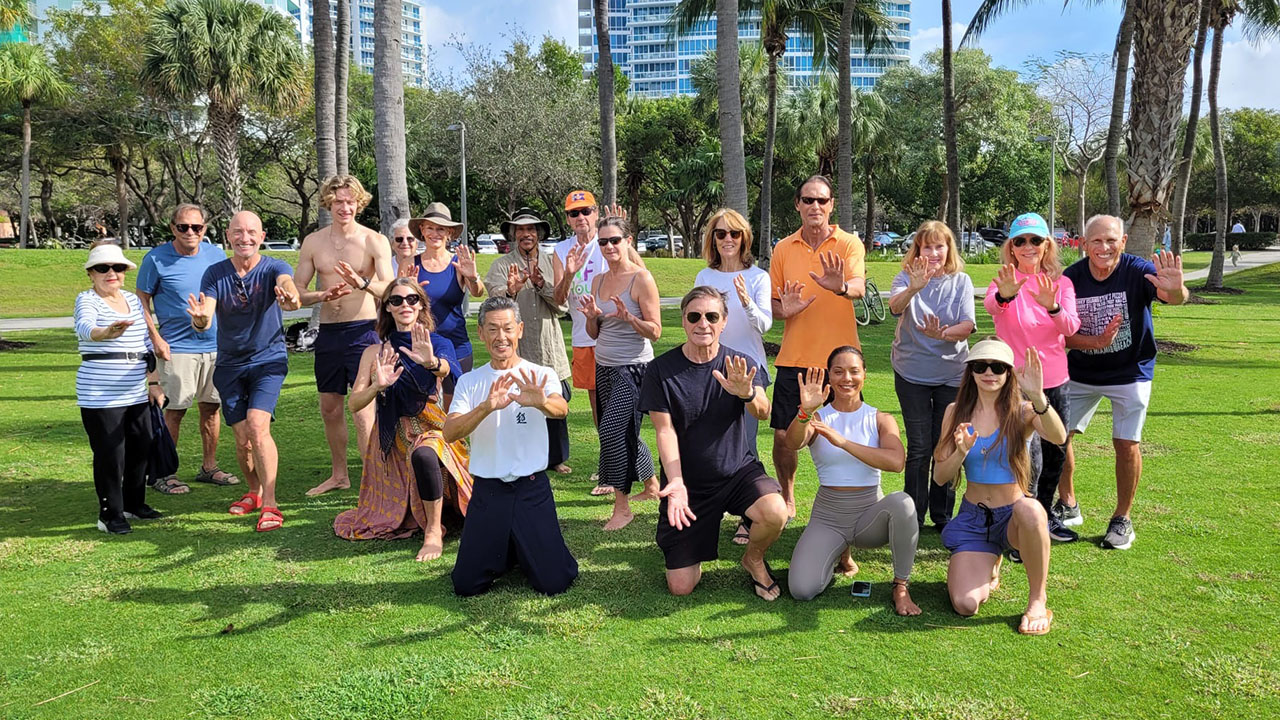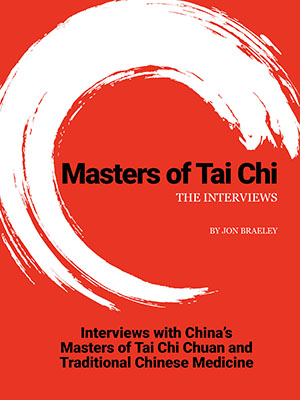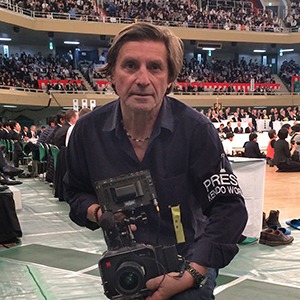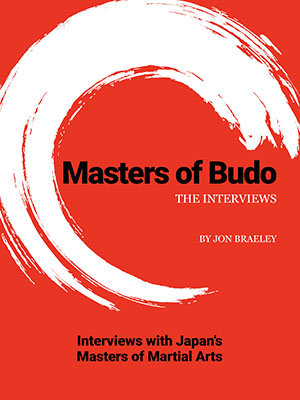Above: The last Tai Chi class of 2024, with Hiroshi sensei and Jon Braeley (center)
This post, to add Tai Chi to your Martial Art practice, is a change in my usual blog topics. My blog usually focused on the content of my Empty Mind Films, and not my own martial art practice. Yet I have been studying martial arts for over fifty years, and very few of my online followers know of my karate practice unless they read my biography page. I am no longer filming and traveling as I did with Empty Mind Films, and in January 2025, I will step away from running my YouTube channel which has almost 650,000 subscribers. This will allow me to indulge myself and talk about any topic I wish.
My First Tai Chi Experience
My first introduction to Tai Chi was just before my 22nd birthday when I gained my Karate black belt. I have always prized the teacher over the style and when I met Wu style Tai Chi instructor David Barrow in my home town of Sheffield, I was so impressed that I became his student for the next two years. Even though I returned to Karate practice, the experience of training in Tai Chi gave me a broader understanding of martial arts. Three years later I would once more, break from Karate to practice Aikido for about six months.

Jon Braeley at 22 years with Tai Chi master Leong Fong
So what can be gained from straying away from your chosen martial art? Most traditional martial arts are considered closed combat systems. Meaning they focus on a given set of technique within their particular style. Karate is typical of this. The benefit to a closed system is at the early stage, where it will build a solid foundation based on a set of basic technique. I think that once you reach black belt and above, an inflexible closed system is too constraining. Stubborness is a trait often seen in martial arts practitioners and teachers who never look beyond their own style and I view this as a disadvantage. By the time I was in my thirties, I had already trained for a number of years in Shukokai and Shotokan karate and in Wado Ryu karate, as well as the aforementioned Tai Chi and Aikido. Today I teach Goju Ryu karate.
In 2003, I attended a seminar in Texas by Hirokazu Kanazawa sensei, one of the World’s leading karate masters and one of my teachers. It happened to be his 72nd birthday and during his birthday dinner he mentioned to me that he also practiced Tai Chi, not as a martial art but for it’s health benefits. I was almost fifty years old and fit and strong. It had not occurred to me about what the future would be, and now 20 years later I have been taking regular Tai Chi classes.
Benefits of Tai Chi v. Karate
Tai Chi Chuan has taught me that strength can take many forms. It is disguised in Tai Chi due to the low-impact movements, unlike the high-energy techniques of karate. Tai Chi has a larger affect on the smaller muscle groups and over time this gave me better balance and a stronger lower body than I got in karate. Slower movements allow greater control over your knee and hip joints and lower back, which can be pushed to their limit but not past them, stopping potential injury. It is the lower body, below the waist, where karate finds its formidable power.
An important aspect of the Tai Chi class I take, is Qigong or mastering the breath and mind, In reality for me, this means relaxing my body. Every exercise has a corresponding inhalation of breath (usually 4 seconds) through the nose and slow exhilation of six seconds through the mouth. Sometimes the breath is paused for 2 to 3 seconds depending on the exercise. During Qigong movements, which can be as simple as raising your palms up and down, you are reminded to be aware of your natural surroundings, of nature, which fortunately for my class is palm trees and the warm breeze from the adjacent ocean.
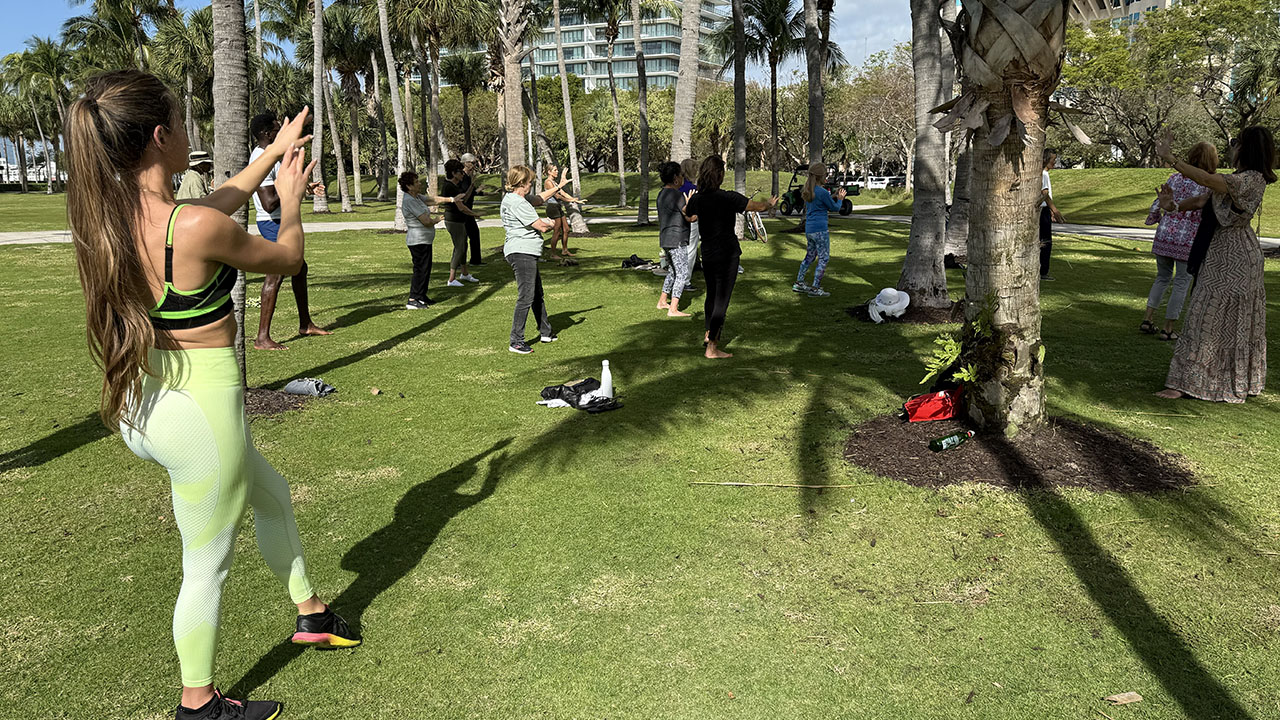
Enjoying the Tai Chi class is Leydi, (far left) from our karate dojo.
The slow deliberate movements of Tai Chi combined with Qigong breathing and meditation practice will become the opposite side of the coin or the Yin and Yang for a karate practitioner. When I am training with karate students the first problem I encounter is their stiffness – too much tension and too much power, which limits their speed in both moving and striking. The second major problem is balance, where they are not aware of their center of weight or where their weight should be distributed. Both the ability to be relaxed in balance are critical in karate practice.
Added Benefits
One advantage of Tai Chi is the chance to meet a diversified set of people. Our class is composed of young and old from all walks of life. It’s fascinatiiong to find out where everyone is from and what they do. The majority of participants in our class would not be physically able to take a karate class, but here they are enjoying themselves in a Tai Chi workout.
And that is the keyword… enjoyment. Over thirty years ago I left England to live in a warmer, sunnier climate where I can step out 365 days a year and not check the weather forecast. Our Tai Chi class takes place in the morning next to the ocean, in a public park amid palm trees. This natural environment adds another enjoyment level over the workout in a martial arts dojo. But regardless of your location, look for a Tai Chi class in your area… you will not regret it.

